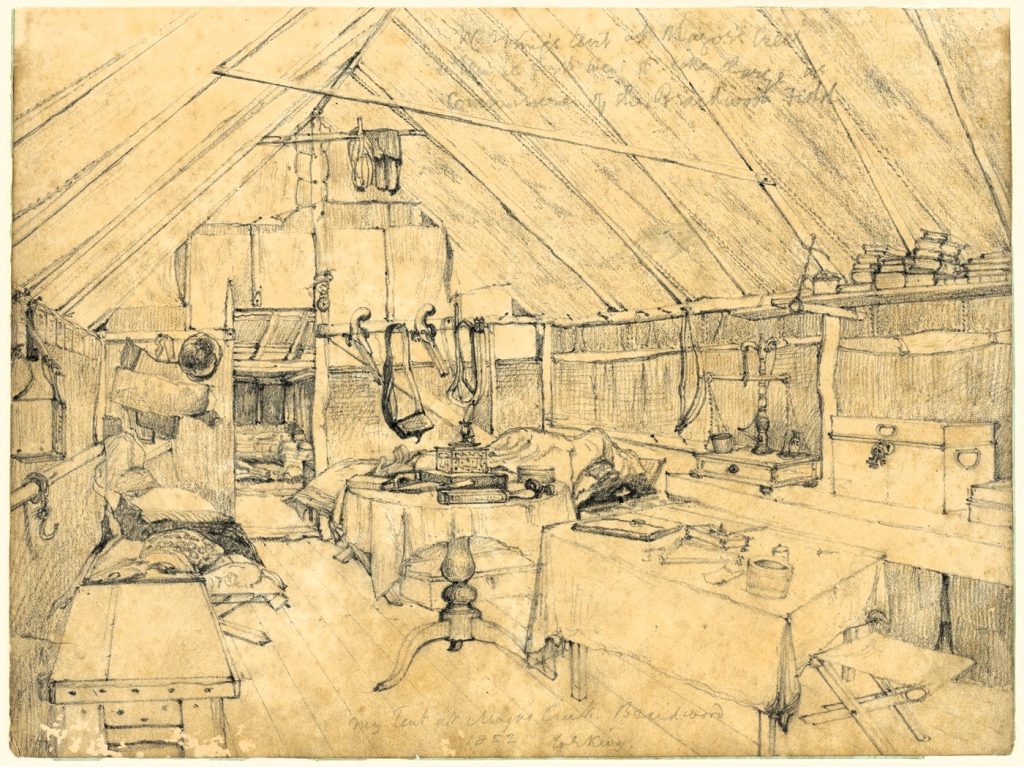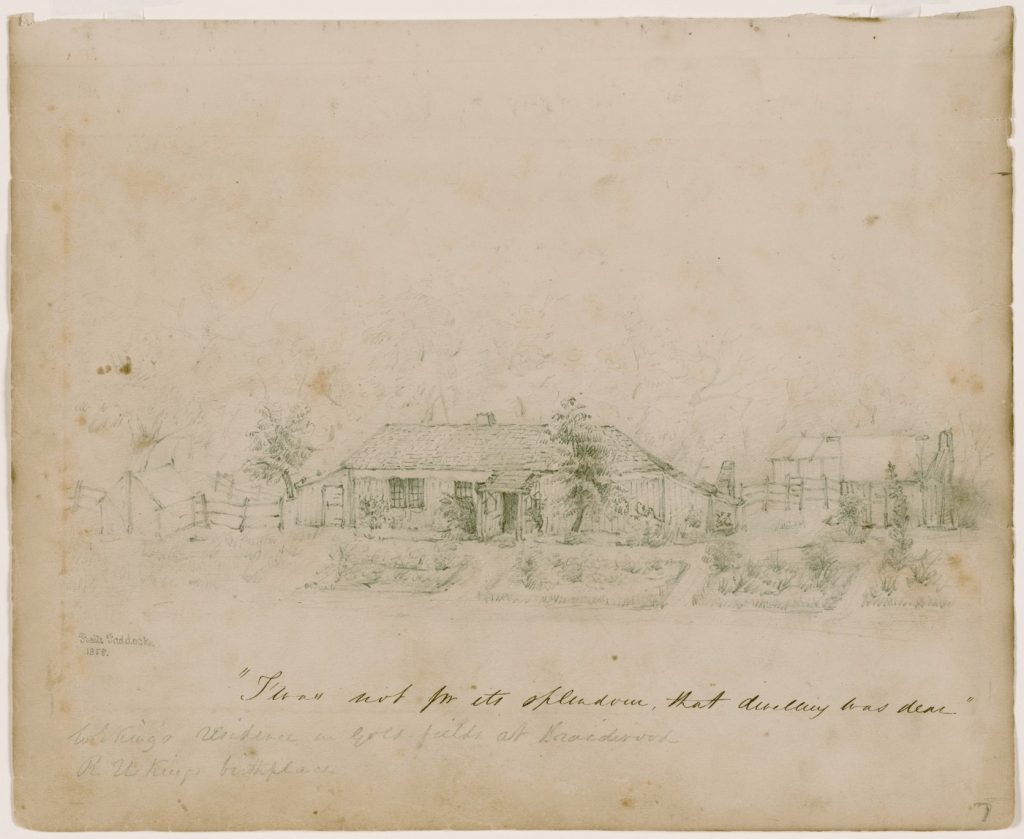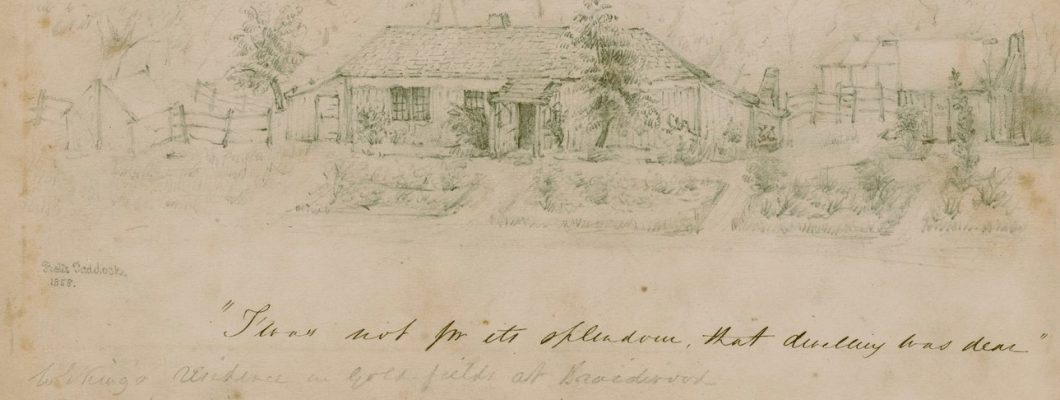William Essington King, Esq, Commissioner, and Chairman of the Araluen Local Court1https://www.findagrave.com/memorial/212666929/william-essington-king. was born 8 September 1821 at Parramatta, the third son of Rear-Admiral Philip Parker King and Harriet, née Lethbridge, and the grandson of Philip Gidley King, third Governor of New South Wales.
King was appointed assistant gold commissioner at Turon in August 1851. The following year he was promoted, becoming commissioner for the Southern Goldfields at Braidwood. Resigning his commission at Braidwood in 1859, King and his wife moved to Victoria and from 1859 to 1863, along with his brother Arthur, ran a stock and station agency in Bourke Street, Melbourne.
On 27 April 1854 he had married Christiana Sarah (1835-1886) eldest daughter of William Edward Riley, and they had eight sons and three daughters. Harriet Christina (1855-1937), Rose Utricia (29 August 1857 2Sydney Morning Herald (NSW : 1842-1954), Thursday 3 September 1857, p 1.-1945), Annie Sophia (1863-1950), Essington Hugh (1865-1874, aged 9), Hannibal James (1867-1945), twins boys George (1870-1943) and (unknown), William (January 1872-January 1872 ), twin boys Edwin Septimus (1872-1940) and Eustace Octavius (1872-1927), John Gidley (1875–22 March 1902, aged 27) and Alexander Trevelyan (1879-1949).
Predeceased by his wife, who died on 26 October 1886, William Essington King died at his home, Tregeare, Armadale on 20 November 1910 and was buried in the St Kilda cemetery.3Dorothy A. Rogers, ‘King, William Essington (1821-1910)‘, Australian Dictionary of Biography, National Centre of Biography, Australian National University, https://adb.anu.edu.au/biography/king-william-essington-4427/text6235, published first in hardcopy 1974, accessed online 17 December 2023. At the time of his death King, was one of the oldest of Australian natives, leaving a family of five sons and three daughters. 4Australian Town and Country Journal (Sydney, NSW: 1870-1919), Wednesday 30 November 1910, p 54.

Like his father and four siblings William King sketched. His pencil drawing ‘My Tent at Major’s Creek, Braidwood, 1852‘ shows the interior of his tent when he was gold commissioner. King’s first residence at Majors Creek was a tent, albeit a substantial one with wooden floorboards. The sketch, drawn in pencil on buff paper, shows a comfortable if cluttered interior where a handsome loo-table gives the lie to the makeshift effect of camp-stool and stretcher-bed. This is King’s only signed sketch, but Bells Paddock 1858, another pencil drawing, is undoubtedly his. It shows the house at Bells Paddock where he lived after his marriage and is annotated with a line from a popular song, ‘Twas not for its splendour, that dwelling was dear.‘5Dictionary of Australian Artists online, https://www.daao.org.au/bio/william-essington-king/biography/.

Courtesy State Library of NSW, Mitchell Library Reading Room.
In 1859-63 William and his brother Arthur ran a stock and station agency in Bourke Street, Melbourne; their first recorded sale was 176 bullocks from John King & Co. In 1864, Essington managed John’s Sydney Cottage station. At Rosedale he was a trustee and secretary of the Board of Guardians at St Mark’s. In 1869, he served on the first Rosedale Roads Board and when it became a Shire Council in 1871 he was elected president. He returned to Melbourne in 1872 and engaged in business pursuits, among them a directorship of the Colonial Mutual Fire Insurance Co. in 1891-1906. In 1895, he briefly managed Bayley’s Reward Reef mine at Coolgardie. An active Anglican, he was a lay canon of St Paul’s Cathedral in 1875-1908.6Dorothy A. Rogers, ‘King, William Essington (1821–1910)‘, https://adb.anu.edu.au/biography/king-william-essington-4427/text6235, accessed 17 December 2023.
